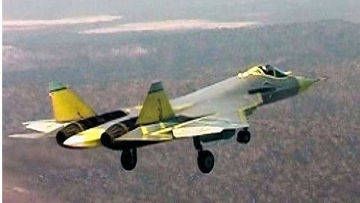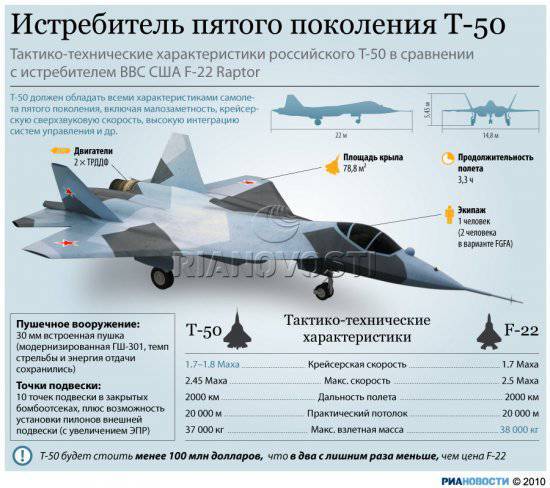Fifth generation fighter: what is India choosing?
 The development of the fifth generation fighter has become one of the main themes of cooperation between Russia and India. The joint creation of the new aircraft, which was discussed during the recent visit to India of Russian Defense Minister Anatoly Serdyukov, raises many questions, and in particular - which fifth generation fighter is involved, because Russia already has the first prototype of the T50 aircraft created in within the PAK FA project?
The development of the fifth generation fighter has become one of the main themes of cooperation between Russia and India. The joint creation of the new aircraft, which was discussed during the recent visit to India of Russian Defense Minister Anatoly Serdyukov, raises many questions, and in particular - which fifth generation fighter is involved, because Russia already has the first prototype of the T50 aircraft created in within the PAK FA project?India, which is actively developing its aviation industry, also seeks to get its own car of a similar class. At the same time, the development of such an aircraft from scratch is today objectively impossible for the Indian industry, and here the key factor for Delhi is cooperation with Russia, which, in turn, needs financial support to complete the development of its own fighter.
T-50 today, many experts call a very promising platform that can become the basis for an extensive family of combat aircraft, just as it was the previous development of Sukhoi - T-10, which generated the branching tree Su-27 and its modifications.
This is the qualitative difference between the T-50 and the F-22 - the American fighter, which became the world's first fifth-generation serial combat aircraft, was too expensive to become popular, and the technical problems that are inevitable for the first mover, coupled with political restrictions (export F -22 prohibited by law) excluded the possibility of the development of this system.
The second American car of the new generation, the F-35, which is currently undergoing testing, is faced with problems of a different kind: the US tried to create a fifth-generation “cheap fighter” that would have the same capabilities as the more expensive F-22, but in several a reduced version - a smaller ammunition, a somewhat smaller range and speed of flight, less radar capabilities, and so on.
In actual fact it was very difficult to combine these requirements in one car.
The situation was aggravated by the fact that, based on the F-35, its creators attempted to build three different vehicles - a "conventional" fighter for the Air Force, a carrier-based aircraft for the US Navy and a short take-off and vertical landing plane for the Marine Corps and the Navy of the US allies. As a result, the implementation of the program is delayed, and the cost increases.
Against this background, the T-50 program, which has already been developed taking into account the well-known experience of creating F-22 and looking at F-35, looks more realistic. The Russian designers did not begin to harness “a horse and a quivering doe” into one cart and went along the already worked out way of creating a multi-purpose heavy machine, with an adequate margin of safety.
Developed for T-50 engines, on-board equipment and weapons should ensure the success of the program, even if one of the elements is “late”: in each of the areas there is a duplicate option.
It is not surprising that the Russian car was chosen as the prototype for the Indian program FGFA - Fifth Generation Fighter Aircraft. Now that T-50 is already flying and is being tested “without comment”, India and Russia can sign an agreement to develop an aircraft based on it, being confident of the success of a promising program.

Information